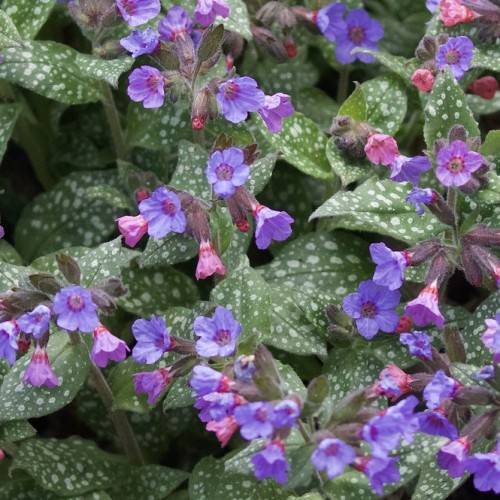
lungwort
Pulmonaria longifolia 'Bertram Anderson'
Cycle:
Herbaceous Perennial
Watering:
Average
Hardiness Zone:
3 - 8
Flowers:
Flowers
Sun:
Part shade,full shade
Leaf:
Yes
Growth Rate:
Low
Maintenance:
Low
Care Level:
Medium
watering
Lungwort (Pulmonaria longifolia 'Bertram Anderson') should be watered when the top inch of soil in the pot is dry. Generally, this will require watering once per week when the weather is warm and rarely, if at all, when the weather is cool. For established plants, watering should not be more than once every 7-10 days. If the area experiences a period of dry weather, add more water as needed. When watering with a hose or watering can, water deeply so that water runs through the pot. This will encourage deep rooting and will ensure that the roots of the plants are absorbing enough water.
sunlight
Lungwort (Pulmonaria longifolia 'Bertram Anderson') prefers bright, indirect sunlight and will grow best when it receives 4-6 hours of direct or indirect sunlight per day. It is best to place your lungwort in a location that receives morning sun and then is shaded in the afternoon. If your location receives a lot of intense sunlight, it is recommended that you provide some shade to your lungwort during the hottest parts of the day. Lungwort does well in slightly shady locations, but keep in mind that it will not flower as well in low light levels.
pruning
Pruning lungwort (Pulmonaria longifolia 'Bertram Anderson') should take place in early spring, before new growth begins. Pruning should be minimal as these plants naturally grow in a bushy form. Remove any dead or straggly shoots or stems at the crown of the plant or at ground level. Trim branches just above the leaf node to encourage dense, lush growth. Do not trim in late summer or fall as this could encourage new growth that could be damaged by the cold of winter.
